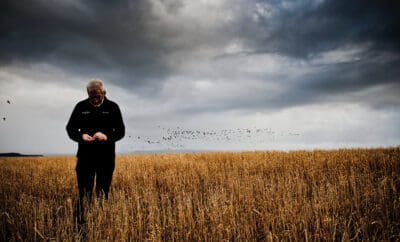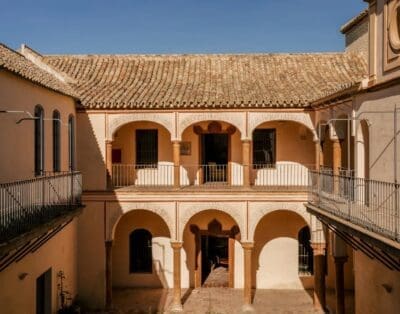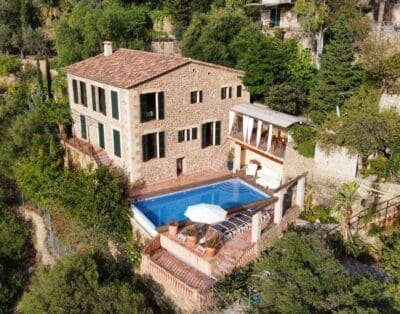David’s Drink Diaries – Issue 3
Ardbeg The Rollercoaster
Ardbeg, one of Islay’s predominate distilleries launched The Rollercoaster last week. This two-bottle set comprises a 1981 and 1989 expression representing the years the distillery closed and then reopened.
Ardbeg’s Director of Whisky Creation, Dr Bill Lumsden, said: “Ardbeg The Rollercoaster is a unique opportunity for collectors to experience two very different tastes of Ardbeg’s heritage, and acquire a set of bottlings with an incredible story. The 1981 expression was made from some of the last malt ever to emerge from our maltings as Ardbeg teetered on the brink of closure. It is a beautiful combination of sweet and spicy sherried notes and hints of Ardbeg’s savoury side. Distilled soon after spirit flowed from the stills again, with a radically different malt, the 1989 is an equally singular Ardbeg. Classic notes of lime and vanilla combine with sea spray and very subtle, smoky tones. A snapshot of the contrasting spirits of those days, the time capsule whiskies of Ardbeg The Rollercoaster will go down in Ardbeg history.”
Beautifully encased in a presentation box crafted from solid Scottish oak by renowned designer John Galvin, Ardbeg The Rollercoaster’s 143 sets will be offered at £85,000 by application from the distillery
Micil
Micil Distillery, situated in the heart of Galway, Ireland, is named after Micil Mac Chearra, a legendary figure locally having a long ancestry of distilling on the islands, dating back to 1848 when he began making poitín on a hillside in Connemara. It is a story of family, heritage, and dedication to a craft that has been passed down through generations, and having started whiskey production in 2020, it is the first legal distillery in Galway in 100 years.
Although there is a focus on traditional methods, Micil Distillery is also committed to sustainability and the community. They source their barley (and other grains) locally, support local businesses, and are actively involved in preserving the cultural heritage of Galway. This commitment extends to their efforts to reduce their environmental footprint. I asked them to what extent:-
“We’re very mindful of our carbon footprint at Micil Distillery. In our family tradition, the grain was grown locally and the by-products of the process were fed to our livestock. In the modern era, we’re mimicking this tradition of sourcing materials locally as much as possible. We still use 100% Irish cereals grown as close to the distillery as possible as well as our own peat. We still feed the edible by-products of the process to the livestock on our family farm. It’s a nice feeling to know that we’re keeping the traditional flow of agriculture going. We’re returning to the soil that was taken out through agriculture.”
One of the interesting aspects of Micil Distillery is its dedication to innovation within the bounds of tradition. While they respect the legacy of Irish whiskey (and poitín), they also explore flavours via the use of interesting cask finishes. Their whiskey is made without automation, using a 500L copper pot still and unique family recipes that have been passed down through the family in the Irish language. Their peated grain is even malted using turf from their family land at Inverin. The whiskey is still maturing, but I am excited about what is to come.
Whilst their barrels are maturing, they have released 3 whiskies to give an indication of their direction, using souced new make spirit. One of these is Earls Island, a triple-distilled whiskey finished in ex-Bordeaux red wine casks and quarter casks that had previously held peated whisky. Historically, Galway was the main Irish port for trade with Spain, France and Portugal, so vast numbers of wine casks would have passed through the region, making this a wonderful homage to that.
I found this to be an excellent whiskey for the price with the nose showing red fruits like currants and strawberries alongside Italian herbs and smoked almonds. The smoke was not overpowering, acting as a seasoning as opposed to a main ingredient. The palate was creamy and followed through from the nose but with the addition of chocolate notes. Really very tasty.
I asked Jimín Ó Griallais, their sixth-generation Connemara distiller about the direction they are taking and the importance of a pronounced cask influence for them:- “Everything we do at Micil is based on the principles of traditionality and resourcefulness. We stick to the traditional methods of production, which includes our cask policy. We also lean on the tradition of resourcefulness amongst poitín distillers too. They did what they could with what they had, and embraced change and the seasonality of crops. Like them we’re not rigidly stuck to tradition for the sake of it – we move with the times and what we have available. For example, we use a hybrid still to distil our spirits. It combines the traditional pot still with technology to improve yields and gain greater control over the spirit profile if we want. This is a practical example of tradition combined with resourcefulness.
The spirit we make is the foundation of exceptional whiskey and because we carefully curate casks we’re able to maintain high standards through to the finished product. We invest a lot in casks and it shows in the spirit. Pronounced cask influence is particularly apparent in the spirit when we use the traditional Connemara Casks (or Quarter Barrels – Galway City). The use of smaller casks creates a pronounced influence in the whiskey but it does not eclipse the spirit so we typically age these smaller casks for 3- 4 years. Smaller casks create more wood surface for the whiskey to interact with – meaning faster and more pronounced maturation. The use of smaller casks complements our use of other larger casks – we celebrate and practice both traditions.”
Additionally, they are also using Connemara casks, which I admit I am unfamiliar with, so asked Jimin to explain:- “Connemara casks (feircín – in the Irish language) were widely used in the Connemara region as they were easier to smuggle than larger casks. They also suited the quantities produced in the smaller pot stills that were once dotted throughout the landscape. These casks were made from scratch by local coopers and indeed they would have repurposed larger casks that came in from Latin Europe that were originally full of wines/ fortified wines and spirits. A plethora of wood influences were available as a result.”
Cotswold Distillery
Disclosure – I am a micro shareholder, buying a few shares in a crowdfunding round a few years ago, but this has not influenced my editorial content.
Nestled in the idyllic Cotswolds countryside of England, the Cotswold Distillery is a beacon of English whisky making. Established in 2014 by Dan Szor it quickly earned a reputation for producing high-quality whiskies making it a significant player in the English whisky revival. One that is now really gathering steam and making an impact.
It is all too easy to jump on the bandwagon and rave about English whisky, much like with English Sparkling wines, but, as with most things, there is good and bad. Cotswold is definitely in the former category releasing some truly delicious drams. I have previously written on my own website a feature on the distillery which you can read here and an interview with that can be viewed on YouTube.
Subsequent to my previous article, a second distillery has been built, dedicated to whisky in order to meet the growing demand (they also make gin). The brand’s success has led to its whisky gaining national listings in major supermarkets such as Sainsbury’s, Tesco, and Waitrose. Furthermore, their distribution has expanded to an impressive 35 countries.
This growth caught the attention of Berry Bros & Rudd, who, in early 2023, acquired a minority stake in the company. In alignment with BBR’s commitment to sustainability, which I plan to delve into in a comprehensive piece, this partnership provides the necessary financial resources for vital initiatives such as the development of a biodiverse ecological treatment system.
Cotswold Founders Choice – 59.1% and £75
I was looking forward to tasting this having come from shaved, toasted and re-charred ex-red wine Barriques. It was surprisingly tropical on the nose and actually took me to Western Australia where I first picked a mango off a tree. This was joined by chocolate and dried figs. The palate has a slight sweetness and lots of lovely barely flavours accompanied by summer berries and butterscotch. I am not sure of the age but imagine it to be relatively youthful, but that does not detract from it. I wonder if they have any ageing in non-STR red wine casks? Overall, an interesting whisky that is a limited edition of 2500 bottles.
Whiskey Del Bac American Single Malt Whisky
Made in Arizona, Del Bac is owned by Elaine and Stephen Paul. The idea for the brand came when Stephen was cooking a BBQ and Elaine asked what would happen if you used Mesquite wood (which Stephen was using) instead of Peat to smoke the barley. I love this originality and welcome whisky that is new and innovative. I am pleased to say that the Mesquite influence compliments, rather than dominates.
Whiskey Del Bac Classic 46%
The nose opens to show hazelnut honey on the nose with ginger and tangerines. The palate suggests a stronger ABV than 46% with lots of nutmeg spice and caramelised bananas. This is backed up with orange peel and lime leaves, with the smoke gently running through which I really enjoyed.
Whiskey Del Bac Dorado 46%
A beautiful nose of chocolate, oranges and freshly grated cinnamon. Quite savoury on the palate with a subtle spice that is an anchor for the meaty-like reduced jus that is there. I loved how they used Mesquite wood to smoke the barley, but feel there is something missing on the mid-palate – like it needs an extra element to make it complete.
Whiskey Del Bac Normandie 48.5%
Finished in ex-Calvados casks, this has a richer and deeper nose than the previous two examples of stewed plums, apples and soaked Raisins in PX. The palate is full, dry and complex. I thought of a perfectly cooked steak with a peppercorn sauce when tasting it. I imagine it (and all of them) to be quite youthful but packed full of flavour. I kept going back to this. Very enjoyable.
Christmas Cocktail
Evan Williams Christmas Highball
For those looking to create whisky-based cocktails for non-whisky-loving friends, I can highly suggest this Highball I created, which with its orange and ginger flavours gives it the warmth of Christmas. Feel free to mix the quantities of each to your personal preference. I have chosen Evan Williams as it has a lovely sweetness to it and is not so spicy that it fights with the orange.
25ml Evans Williams Bourbon
100ml Fever Tree Ginger Ale with Orange
Pour over lots of ice.
Garnish with a slice of fresh orange.
Other Tastings
Angels Nectar Cairngorns 4th Edition Single Cask 46%
A pale colour with a nose that offers a wonderful hit of pear crumble followed by underripe apples brushed with lemon juice. The bourbon cask maturation is evident with lovely vanilla notes coming through followed by tangy orchard fruits, making this a refreshing dram for the beginning of the evening.
Angels Nectar Oloroso Cask 46%
A rich colour and a subdued nose initially of savoury elements including wood polish, vanilla and brambles. The palate is pleasing with a richness but without predominate fruits. I am guessing that the cask might have been 3rd or 4th fill, lending an elegant oak and spice flavour.
Langatun Old Crow Swiss Single Malt 46%
A powerful and distinctive nose that hits you square between the eyes. This is not a bad thing, I like it, because it is different having flavours of ripe peaches that have been barbecued predominantly. There is a sweetness on the palate, like a blackberry compote. Emerging from this I found damsons and burnt embers, with an engaging spice.
Voodoo Blood Moon 49.8% – £57
A 13-year-old grain whisky from the North British distillery. Caramelised red grapefruit on the nose with freshly baked granary bread. Again, the palate is meaty with roasted hazelnuts backed up with mixed dried fruit and spice. Hard to tell it was a grain whisky!
Voodoo – The High Priest 8 year old 52.6% – £77
A relatively light nose of caramel and plum. This whisky has been aged in first-fill Burgundy red wine barrels, giving quite a punch on the palate that I wasn’t expecting with rich cooked stone fruits such as damson evident. I got a hint of violets (in a good way) with a subtle smoke. This has a lot more depth than is suggested and a meaty character. Sourced from an Orkney distillery…
Voodoo Black Cat Bone 54.1% and £87.50
A 12-year-old from the Benrinnes distillery in Speyside this has been matured in 1st fill Tawny Port casks. There is a sweetness on the nose complementing the black cherry and vanilla aromas. The palate is drier than expected but weighty with wood spice, vanilla and hints of marmalade.








